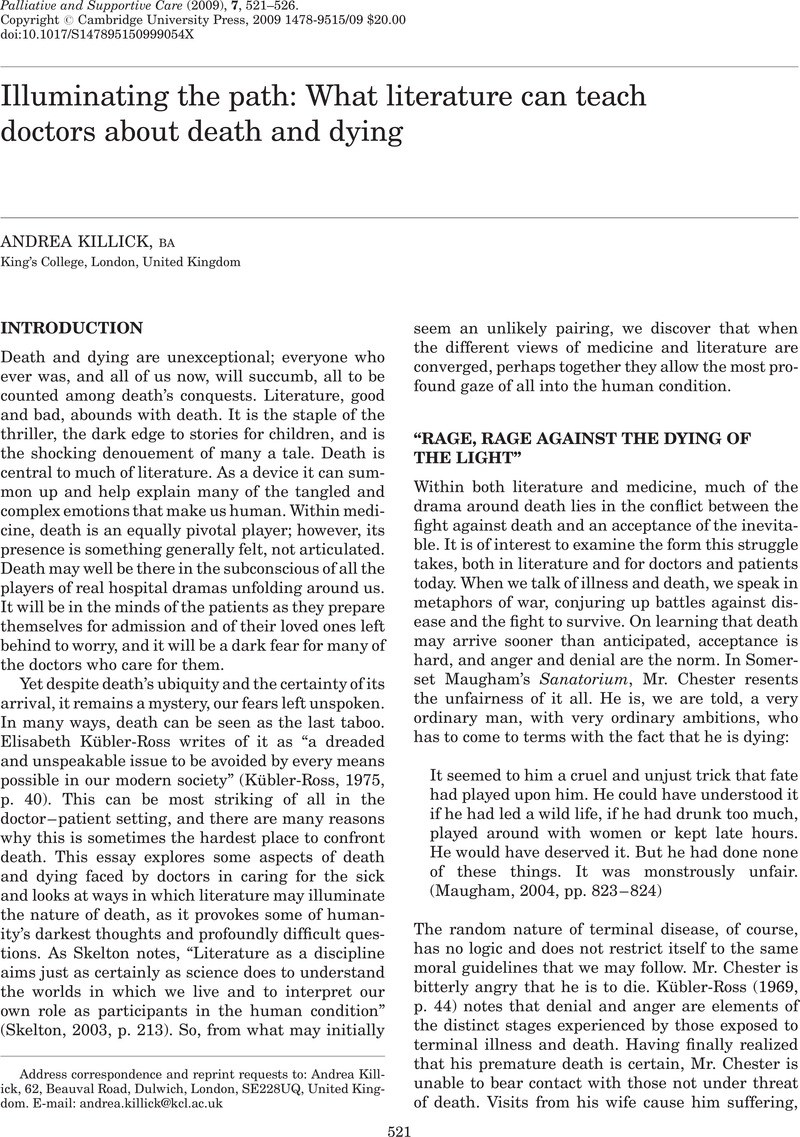Crossref Citations
This article has been cited by the following publications. This list is generated based on data provided by Crossref.
Wein, Simon
2010.
A view of Life in Death.
Journal of Palliative Care,
Vol. 26,
Issue. 3,
p.
205.
Mullangi, Samyukta
2013.
The Synergy of Medicine and Art in the Curriculum.
Academic Medicine,
Vol. 88,
Issue. 7,
p.
921.
Poirier, Therese I.
Stamper-Carr, Connie
and
Newman, Kate
2017.
A course for developing interprofessional skills in pre-professional honor students using humanities and media.
Currents in Pharmacy Teaching and Learning,
Vol. 9,
Issue. 5,
p.
874.



